integumentary system
1/43
There's no tags or description
Looks like no tags are added yet.
Name | Mastery | Learn | Test | Matching | Spaced |
|---|
No study sessions yet.
44 Terms
skin
body’s outer covering
largest organ
composed of 3 layers
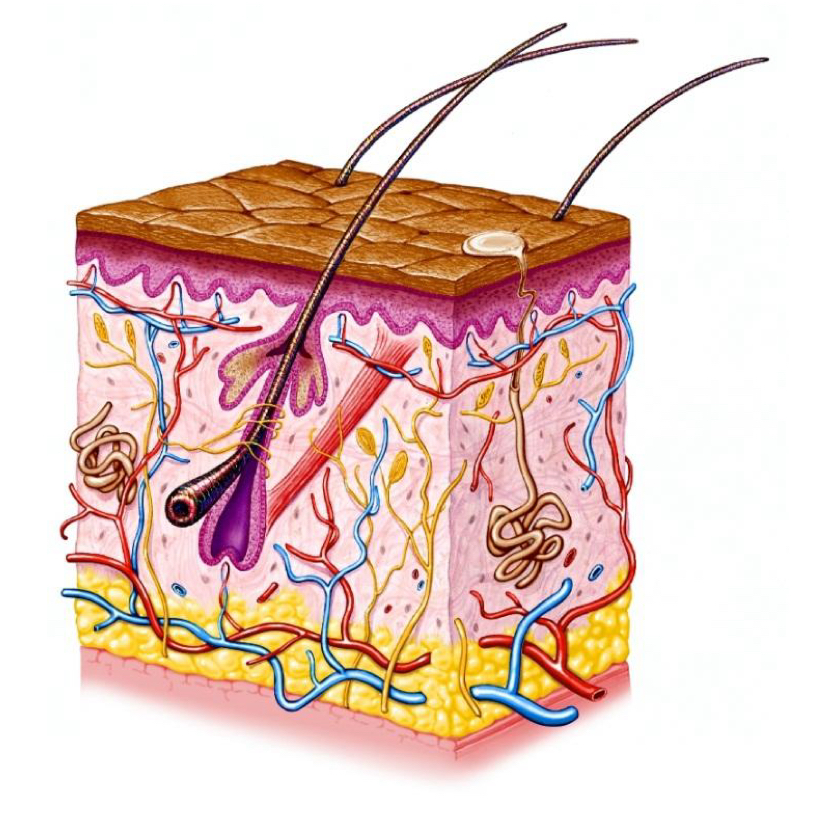
accessory organs
hair follicles
finger and toe nails
skin glands
functions of the integumentary system
protection
first line of defense against bacteria and viruses
protects underlying structures from UV radiation and dehydration
body temperature regulation
if too hot: dermal blood vessels dilate and more blood is sent to the surface so heat escapes
if too cold: dermal blood vessels constrict and prevent heat from escaping
vitamin D production
skin must have sunlight
needed for calcium absorption
sensation
has nerve receptors that detect heat, cold, and pain
excretion
perspiration aids in cooling
results in loss of water and minerals
skin structure
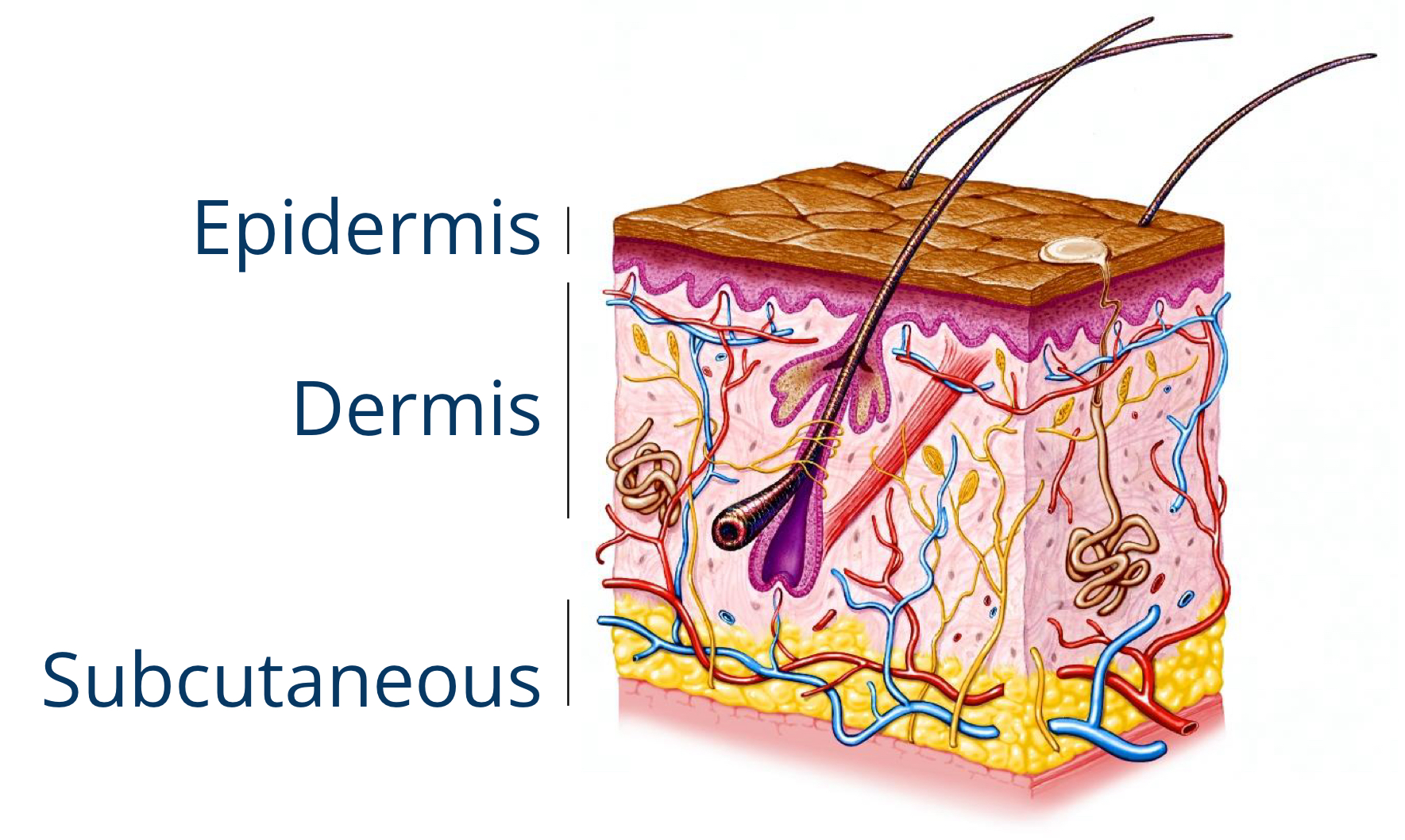
epidermis
outermost layer of skin
epithelial tissue
no blood vessels
no bleeding if scraped
contains keratin
hard protein that makes up hair and nails
melanocyte (skin cell) makes the pigment melanin
gives skin its color
skin color changes
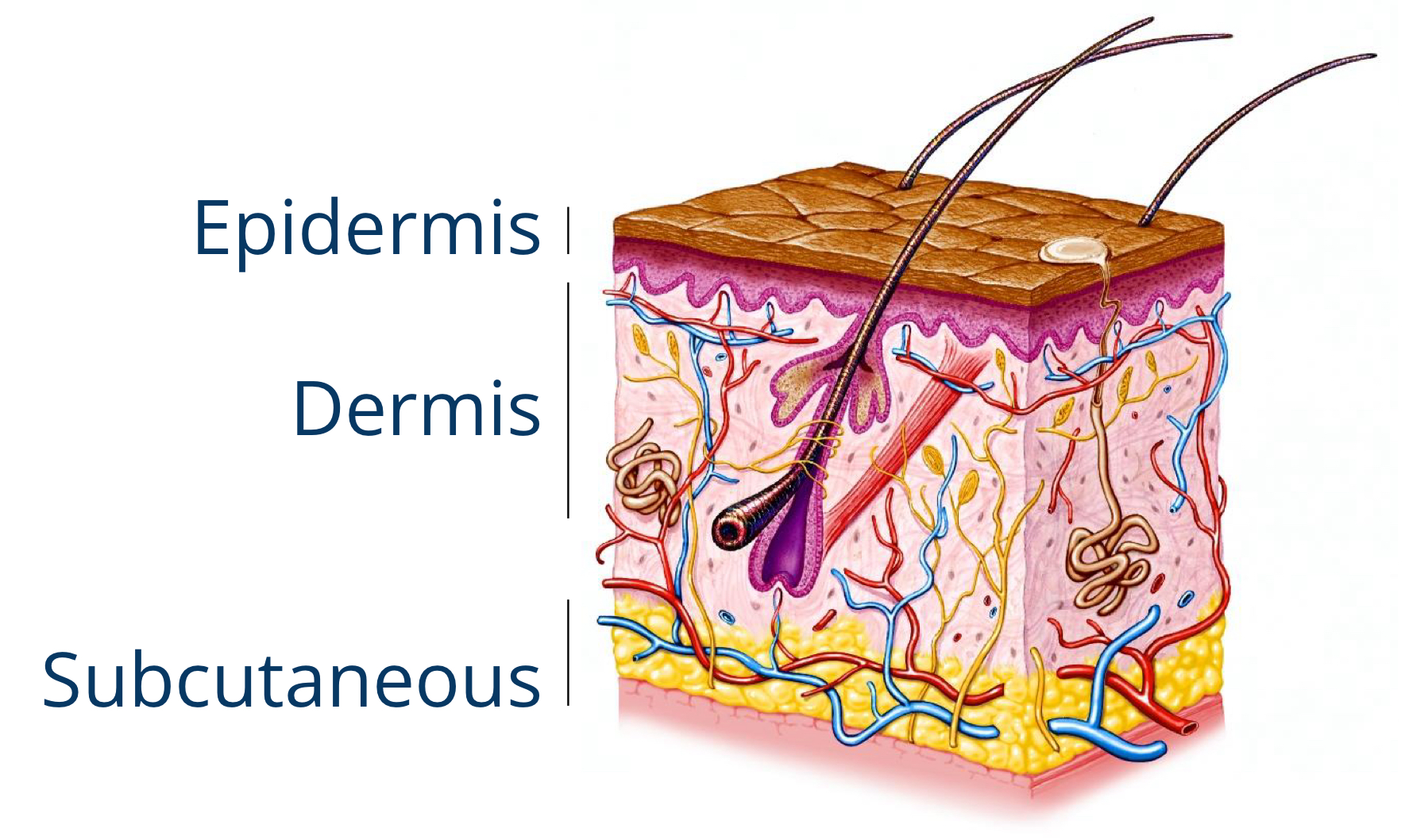
rubor or erythema
red
flushing of the skin when blushing due to dilated blood vessels
pallor or pale
anxiety and cold can cause blood vessels to constrict
cyanosis
bluish tint to the skin when it is not getting enough blood
dermis
thick layer beneath the epidermis
contains blood vessels, arteries, veins, capillaries, and nerves
contains sweat glands and hair follicles
dermal puncture and finger stick both draw blood from capillaries in the dermis

subcutaneous layer
connective tissue
composed of adipose tissue (fatty layer) and larger blood vessels
subcutaneous injection site
third layer of skin

sudoriferous glands
sweat glands

eccrine glands
distributed throughout the body
produce fluid to regulate body temperature
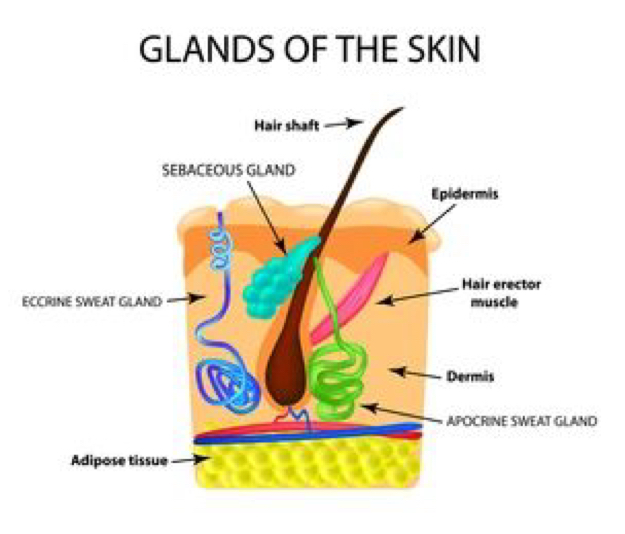
apocrine glands
present in the axilla and pubic area
responsible for odor as bacteria break down organic substances
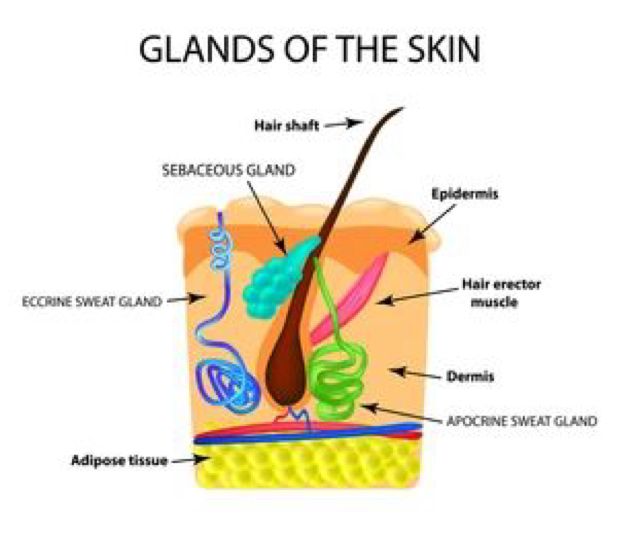
sebaceous glands
secretes an oily substance called sebum
adds a protective layer and prevents fluid loss
neoplasm
means “new growth”
does not indicate if it is malignant (cancerous) or benign
alopecia
hair loss
acne vulgaris
black heads
white heads
pustules
cellulitis
bacterial infection
dermatitis
inflammation with rash
eczema
itchy, red, scaly rash
herpes simplex (cold sore)
blisters
mouth, lips, face
impetigo
bacterial infection
itchy, oozing skin
keloid
an overgrowth of scar tissue
nodule
small growth under the skin
petechiae
ruptured skin capillaries
pediculosis
lice infestation
ringwom (tinea corporis)
fungus infection
circular lesions
rosacea
dilation of blood vessels
redness
basal cell carcinoma
most common
sun exposure
new growth does not heal
squamous cell carcinoma
sun exposure
spreads to surrounding tissues (metastasize)
common on face and head
less common than basal cell
malignant melanoma
most aggressive
sun exposure
itchy
bleeding mole with changes
how is the severity of burns based on?
extent of body surface area
rule of nines is used to estimate % of the body surface area affected by a burn
degree of burn
first degree
second degree
third degree
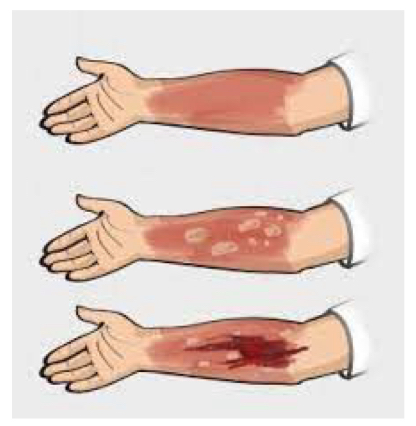
rule of nines
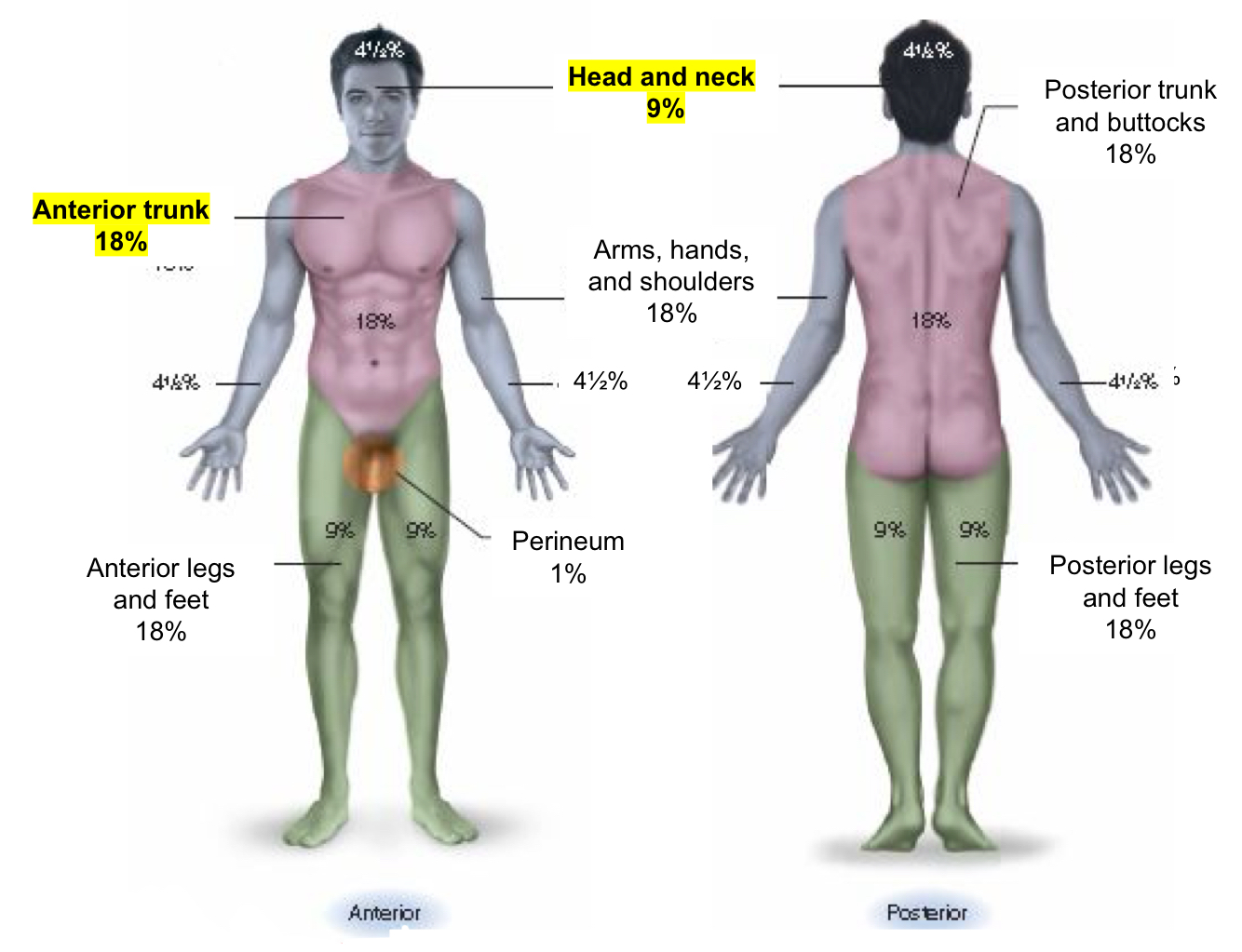
1st degree burn
superficial (epidermis)
pain, redness, swelling (sunburn)
2nd degree burn
partial-thickness
includes subcutaneous tissue
pain, redness, swelling, blisters
3rd degree burn
full-thickness
all layers of skin, muscle possible bone
skin appears charred
always requires medical attention
integumentary system
the body’s outer covering composed of skin, hair follicles, nails, glands, and blood vessels
what is not a function of the integumentary system?
protection from UV radiation
digestion
protection from bacteria
body temperature regulation
digestion
what is not an accessory organ of the integumentary system?
hair follicles
finger and toe nails
dermis
skin glands
dermis
which layer of the skin contains blood vessels and sweat glands?
dermis
epidermis
subcutaneous layer
dermis
which form of skin cancer is the most aggressive?
basal cell carcinoma
melanoma
squamous cell carcinoma
melanoma
which disorder of the skin is an overgrowth of scar tissue?
keloid
eczema
impetigo
cellulitis
keloid
what is used to estimate % of the body surface area affected by a burn?
body surface rule
BMI rule
rule of degrees
rule of nines
rule of nines